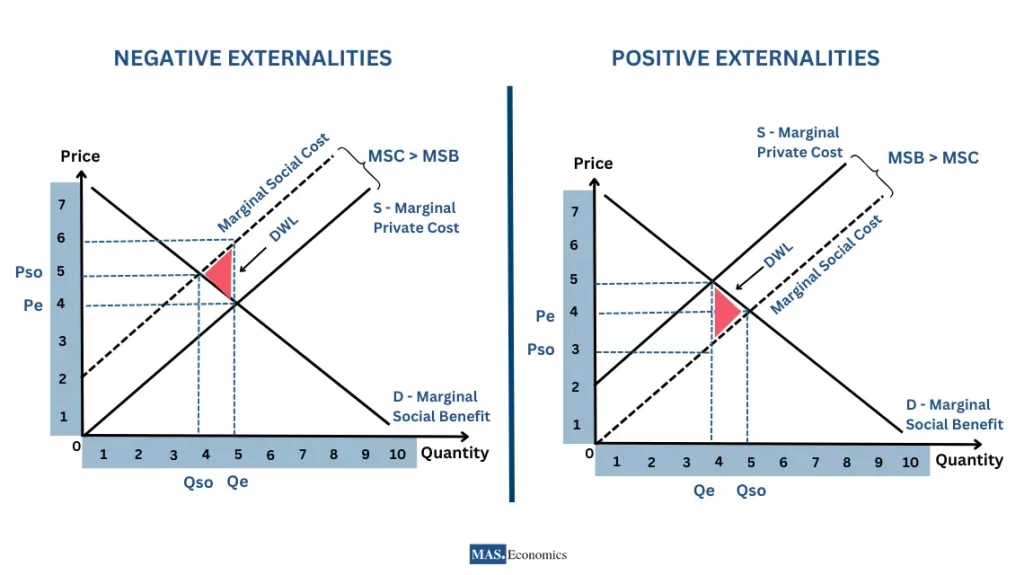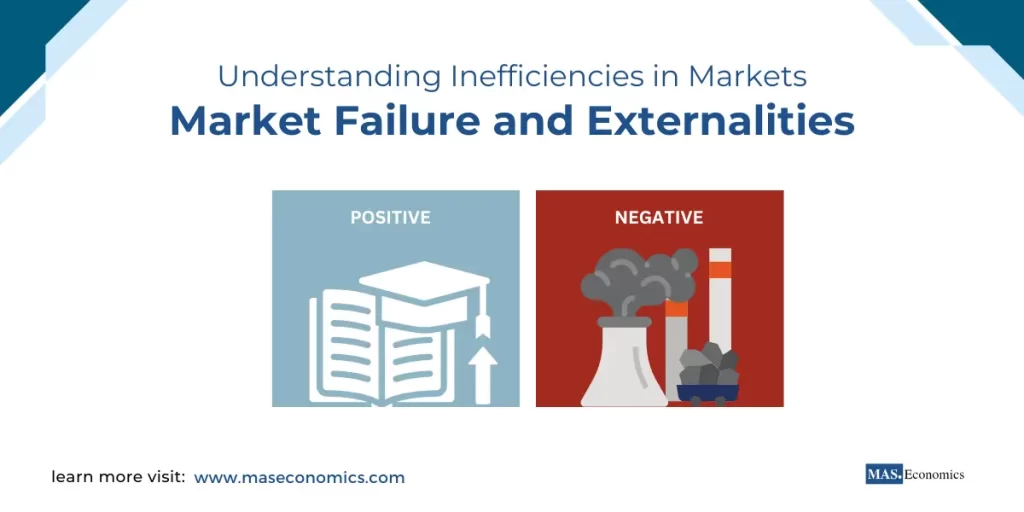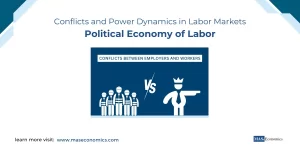In an ideal market, resource allocation through supply and demand would achieve economic efficiency, where no additional reallocation could make someone better off without making someone else worse off. However, real-world markets often deviate from this ideal, giving rise to what economists term market failure. At the heart of many market failures are externalities—unintended consequences of production or consumption that affect third parties not directly involved in the transaction.
In this article, we will explore different types of market failures, with a focus on externalities and their disruptive impact on efficient outcomes. We will also discuss policy measures like Pigovian taxes and subsidies designed to correct these inefficiencies and address the free-rider problem associated with public goods.
What is Market Failure?
Market failure occurs when markets, left to operate on their own, fail to allocate resources efficiently, leading to a net loss in economic welfare. Several causes contribute to market failure, including externalities, public goods, monopolies, and information asymmetry.
- Externalities: Costs or benefits that affect third parties without compensation.
- Public Goods: Goods that are both non-excludable and non-rivalrous, leading to under-provision in markets.
- Monopolies: Firms with market power can restrict output and raise prices, reducing consumer welfare.
- Information Asymmetry: When one party has more information than the other, leading to inefficient decisions.
Among these causes, externalities play a particularly critical role in market inefficiencies, as they lead to a divergence between private and social costs or benefits.
What are Externalities?
Externalities occur when the production or consumption of goods affects third parties who are not directly involved in the transaction. These external effects can either be positive or negative.
Negative Externalities: When Production Harms Society
A negative externality arises when the production or consumption of a good imposes a cost on others that is not reflected in the market price. For example, pollution from factories harms nearby communities, increasing healthcare costs. The producer only accounts for its private costs (such as labor and raw materials) and ignores the social costs borne by society.
Result: Overproduction occurs because the marginal private cost (MPC) is lower than the marginal social cost (MSC), leading to excessive production and economic inefficiency.
Positive Externalities: When Consumption Benefits Society
A positive externality occurs when the consumption or production of a good benefits third parties beyond the immediate consumers. Education is an excellent example—while students gain private benefits, society as a whole benefits from increased productivity and civic engagement.
Result: In the case of positive externalities, the marginal social benefit (MSB) exceeds the marginal private benefit (MPB), leading to underproduction. Without intervention, fewer goods are produced than would be socially optimal.
Graphical Representation of Externalities
The following graphs help visualize how externalities disrupt market outcomes by comparing the optimal level of production to the actual market equilibrium.

In Figure 1, the graph on the left illustrates negative externalities. The market equilibrium quantity \( Q_e \) exceeds the socially optimal level \( Q_{so} \), resulting in overproduction and deadweight loss (DWL). A Pigovian tax can shift the supply curve upward, reducing output to the optimal level \( Q_{so} \).
The graph on the right shows positive externalities. In this case, the equilibrium quantity \( Q_e \) is lower than the socially optimal quantity \( Q_{so} \), creating inefficiency due to underproduction. A subsidy can shift the demand curve to the right, encouraging greater consumption and aligning output with the socially optimal level.
These graphs emphasize the importance of corrective policies, such as taxes and subsidies, that align market outcomes with socially desirable levels.
Pigovian Taxes and Subsidies
Arthur Pigou, a British economist, proposed using taxes and subsidies to correct market failures caused by externalities. These tools help align private incentives with social welfare, ensuring that markets produce at optimal levels.
Pigovian Taxes for Negative Externalities
A Pigovian tax is imposed on producers or consumers responsible for creating negative externalities. This tax raises the private cost of production to reflect the full social cost, discouraging overproduction.
Example: Carbon Tax
A government may implement a carbon tax, charging firms for every ton of CO₂ emissions. This encourages businesses to adopt cleaner technologies, reducing environmental harm and bringing production levels closer to the socially optimal quantity.
Subsidies for Positive Externalities
In the case of positive externalities, governments offer subsidies to increase private benefits, encouraging greater consumption or production of goods that benefit society.
Example: Education Subsidies
Governments may provide education subsidies in the form of scholarships and grants, making higher education more accessible. This increases the private benefit of pursuing education, which, in turn, enhances social productivity and civic engagement.
Public Goods and the Free-Rider Problem
Public goods present a unique challenge to market efficiency due to their non-excludable and non-rivalrous nature. These characteristics mean that individuals cannot be excluded from using the good, and one person’s consumption does not reduce its availability for others.
Examples of Public Goods
- National Defense: Every citizen benefits from national defense, regardless of whether they contribute to its funding through taxes.
- Street Lighting: Once installed, streetlights provide illumination to all residents without diminishing their effectiveness for others.
The free-rider problem arises because individuals can benefit from public goods without paying for them, leading to under-provision. For example, if individuals rely on others to pay for public goods, fewer people will voluntarily contribute, resulting in a shortage or complete absence of the goods.
Government Solutions to the Free-Rider Problem
To address this issue, governments step in to fund public goods through taxation, ensuring their provision. Without government intervention, markets would fail to provide sufficient public goods, as private firms have little incentive to offer them due to the inability to exclude non-payers.
Example:
National defense is a prime example of a public good that relies on government funding. No single individual or private firm can effectively provide national defense, as it benefits everyone within a country regardless of their financial contribution. Governments collect taxes from citizens to fund such services, ensuring that everyone benefits from the security and protection offered by the military.
Conclusion
Market failure, driven by externalities and the unique characteristics of public goods, disrupts the efficient allocation of resources. Negative externalities, such as pollution, result in overproduction and harm to society, while positive externalities, such as education, lead to underproduction and lost social welfare.
Pigovian taxes and subsidies offer practical solutions by aligning private incentives with social welfare, ensuring that markets operate at optimal levels. Similarly, governments must intervene to fund public goods, addressing the free-rider problem and ensuring their availability.
By recognizing and addressing these market failures, policymakers can enhance economic efficiency, promote sustainable growth, and improve overall social well-being.
FAQs:
What is market failure?
Market failure occurs when markets, operating on their own, fail to allocate resources efficiently, resulting in a net loss of economic welfare. Common causes include externalities, public goods, monopolies, and information asymmetry, each disrupting the balance between supply and demand.
How do externalities cause market failure?
Externalities occur when the production or consumption of goods affects third parties not involved in the transaction. Negative externalities, like pollution, impose social costs, leading to overproduction, while positive externalities, like education, generate societal benefits that lead to underproduction. These externalities create a gap between private and social outcomes, causing market inefficiencies.
What is the difference between negative and positive externalities?
Negative externalities arise when an action imposes a cost on others, such as pollution from factories affecting nearby residents. Positive externalities occur when an action provides benefits to others, like education enhancing societal productivity. In negative externalities, overproduction occurs, while positive externalities result in underproduction.
How do Pigovian taxes and subsidies correct market failure?
Pigovian taxes are imposed on activities that generate negative externalities, raising production costs to reflect the full social cost and reducing overproduction. Subsidies are provided for activities with positive externalities to encourage greater consumption or production, bringing output closer to the socially optimal level.
What is the free-rider problem with public goods?
Public goods are non-excludable and non-rivalrous, meaning everyone can benefit from them without reducing their availability to others. The free-rider problem occurs when individuals benefit from public goods without contributing to their cost, leading to under-provision. Governments typically fund public goods through taxation to ensure their availability.
Why do governments intervene in markets with public goods?
Since private firms have little incentive to provide public goods due to the free-rider problem, governments step in to ensure their provision. For example, national defense is funded through taxes to guarantee everyone benefits from security, even if individuals do not directly pay for it.
How do Pigovian taxes reduce negative externalities?
Pigovian taxes increase the cost of activities that produce negative externalities, such as carbon emissions. By raising prices to reflect social costs, these taxes encourage firms to adopt cleaner technologies and reduce harmful activities, aligning production with socially optimal levels.
Thanks for reading! Share this with friends and spread the knowledge if you found it helpful.
Happy learning with MASEconomics




